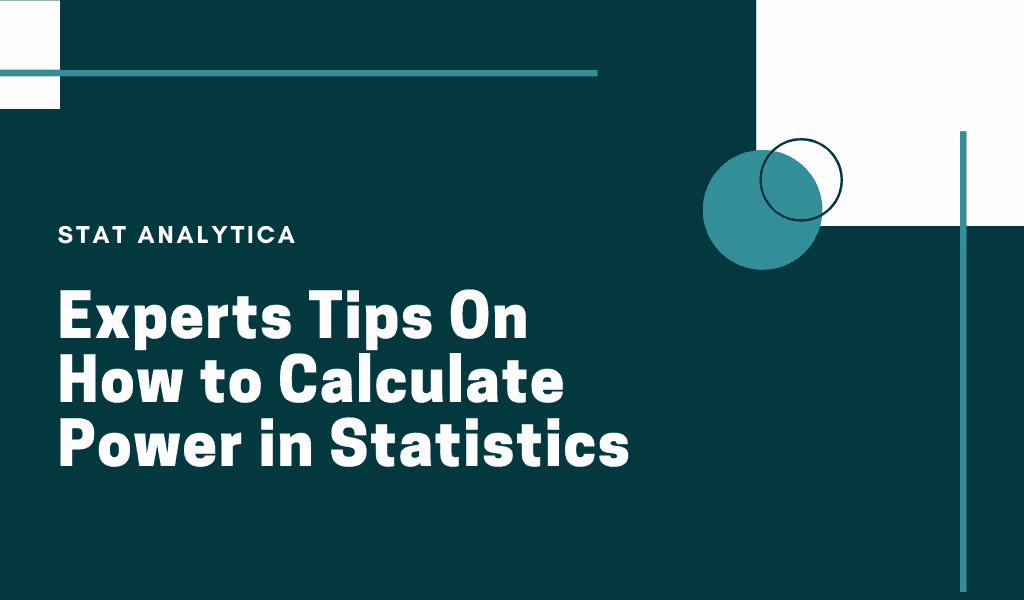As a statistics student you should know how to calculate power in statistics. If you are still not finding the best ways to calculate power in statistics. Then don’t worry we are going to share with you the best and efficient ways to do it.
The statistical strength of a study (sometimes called sensitivity) is likely to be the probability of how likely the study is to distinguish the actual effect from a chance.
Likely, the test is properly rejecting the hypothesis (i.e. “Your hypothesis to prove). For example, a study that has 80% strength means that the study has an 80% chance of testing significant results.
High statistical power means that test results are likely to be valid. However, as power increases, type II errors are likely.
Low statistical power means that the results of the test are questionable.
Statistical power helps you find if your sample size is large enough.
It is possible to conduct a hypothesis test without calculating statistical power. If your sample size is too small, your results can be inconclusive when they have enough sample you have.
How to Calculate Power in Statistics
Table of Contents
Statistical Power and Beta
Statistical power
A Type I error is a false rejection of a true null hypothesis. Alpha is the size of the test. A Type II error is where you do not reject a false infirm hypothesis.
Beta
Beta (β) is likely that you will not reject a null hypothesis when you are false. Statistical power complements this probability: 1-β
How to Calculate Statistical Power
Statistical power is considerably difficult to calculate by hand. This article on Moresteam explains it well.
Software is normally used to calculate the power.
Calculate power in SAS.
Calculate power in PASS.
Power Analysis
The Power analysis is a method for finding statistical power: the possibility of finding an effect, assuming that the effect is. To put it the other way, power is likely to dismiss a zero hypothesis when it is wrong. Note that power differs from a Type II error, which occurs when you fail to reject a false null hypothesis. So you can say that power is likely not to make your Type II error.
A Simple Example of Power Analysis
Suppose you were doing a drug test and this medicine was working. You run a series of tests with effective medication and a placebo. If you have the power of .9, it means that 90% of that time will give you statistically significant results.
In 10% of cases, your results will not be statistically significant. The power, in this case, tells you the possibility to find the difference between the two means, which is 90%. But 10% of the time, you won’t get a difference.
Reasons to run a Power Analysis
You can run a power analysis for many reasons, including:
To find out the number of tests needed to achieve a certain size effect. This is probably the most common use for power analysis—it explains how many tests you need to avoid incorrectly rejecting the null hypothesis.
To find power, given an impact size and number of tests available. This is often useful when you have a limited budget, say, 100 tests, and you want to know if testing that number is enough to detect an effect.
To validate your research. Power analysis is an easy science conducted.
The calculation of power is complex and is usually always done with the computer. You can find the list of links to the online power calculator here.
The power of any test of statistical importance is defined as the possibility that it will dismiss a false disturbance. If the statistical power is high, type II is likely to make an error, or conclude that there is no effect, when in fact, one is, goes down.
The size of the effect equals the critical parameter value, which reduces the hypothesized value. Thus, the size of the effect is equal to [0.75 – 0.80] or – 0.05. Calculation power. The power of the test is likely to dismiss the zero hypothesis, assuming that the actual population ratio is equal to the critical parameter value.
Steps for Calculating Sample Size
- Specify the hypothesis test.
- Specify the importance level of the test.
- Then specify the smallest effect size that is of scientific interest.
- Estimate the values of other parameters needed to calculate the power function.
- Specify the desired power of the test.
Conclusion
Now you have seen the plenty of ways to calculate the power in statistics. If you are still finding it difficult to calculate the power in statistics, then get into touch with our statistics assingment helper.
Get the best statistics homework help from the experts at nominal charges. We are offering the world class help with statistics homework to the students across the globe.


